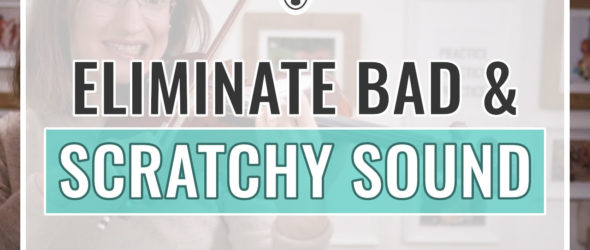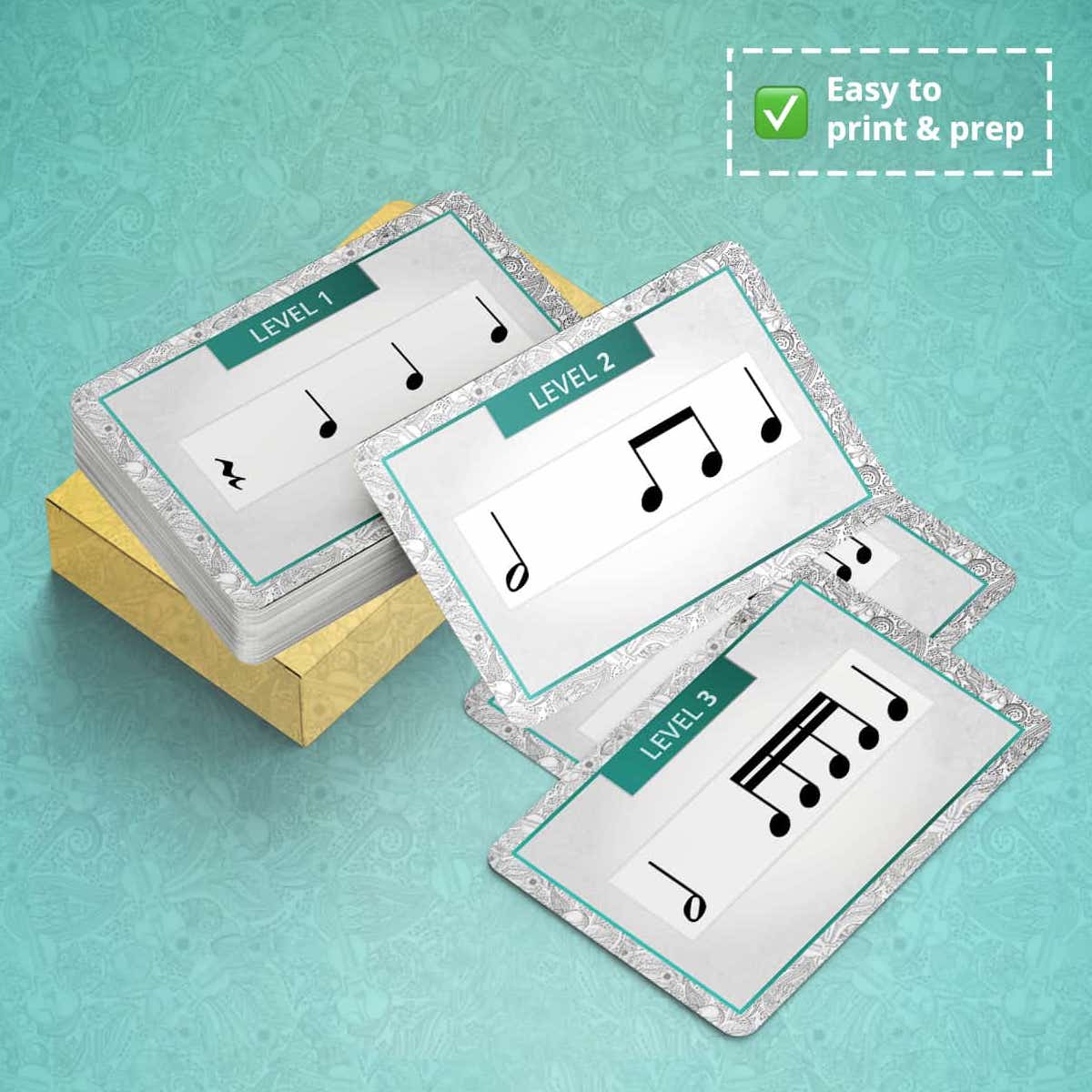Is a violin scratchy sound familiar to you? Learn what are the possible reasons and how to avoid them!
Every violinist suffers from bad sound from time to time. The factors influencing your quality of sound can come from the violin itself or from flaws in your technique. To eliminate scratchy sound you will need to check each one in turn and make sure the problem isn’t coming from there.
Sometimes the issue is a combination of factors so make sure to experiment and return to previous points, even if you think you’ve already dealt with them.
Also, our bodies tend to keep doing things the way they are used to until we train them for something else, so even if you fix an issue, it can return later in a similar form. So you might need to use this list time and time again.
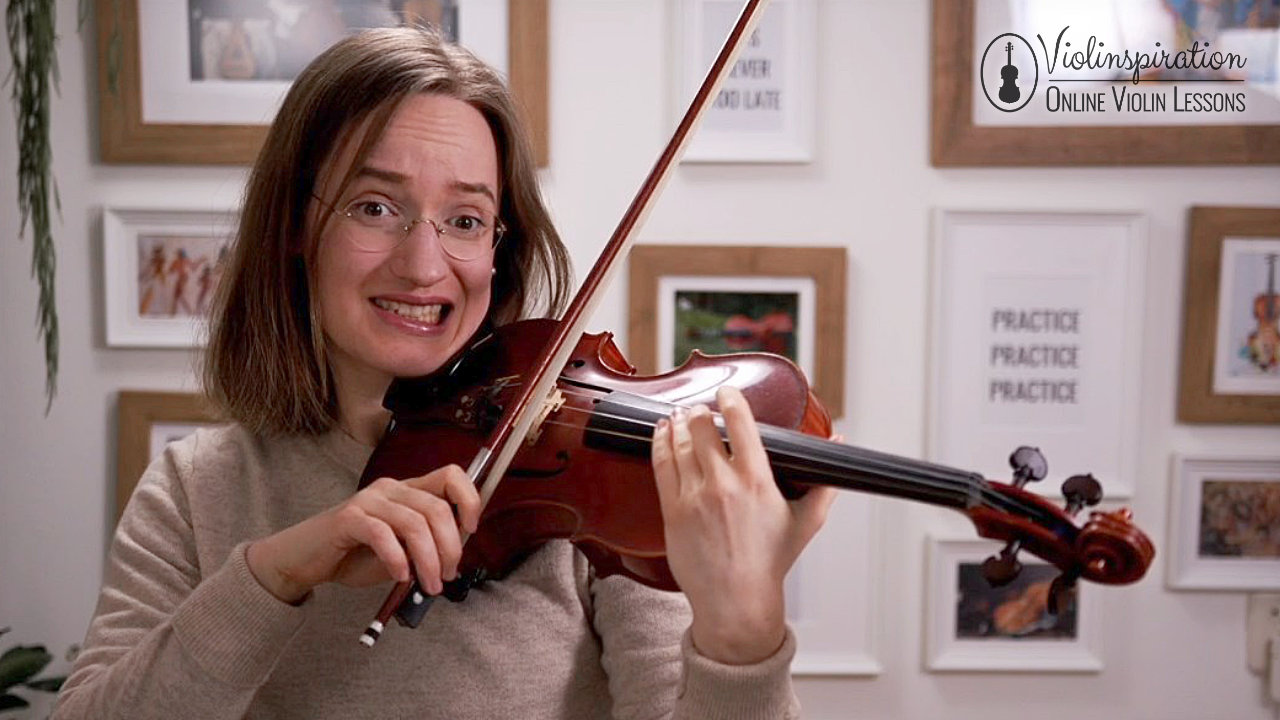
Why Does My Violin Sound Scratchy?
There are a handful of things that can make a violin sound scratchy, and generally speaking they are to do with the right hand, not the left. Here are the possible reasons why this can happen.
I will first list the most common issues, where to look first. This assumes that your violin is in good shape, then I will discuss issues with the violin itself.
1. Your Bow is Not Straight
The bow needs to move in a straight line at right angles to the body or neck and parallel to the bridge. This is quite hard to judge looking from where the head is positioned when playing. The best way to be sure you’re moving the bow straight is using a mirror or having someone watch you and adjust you when you stray.
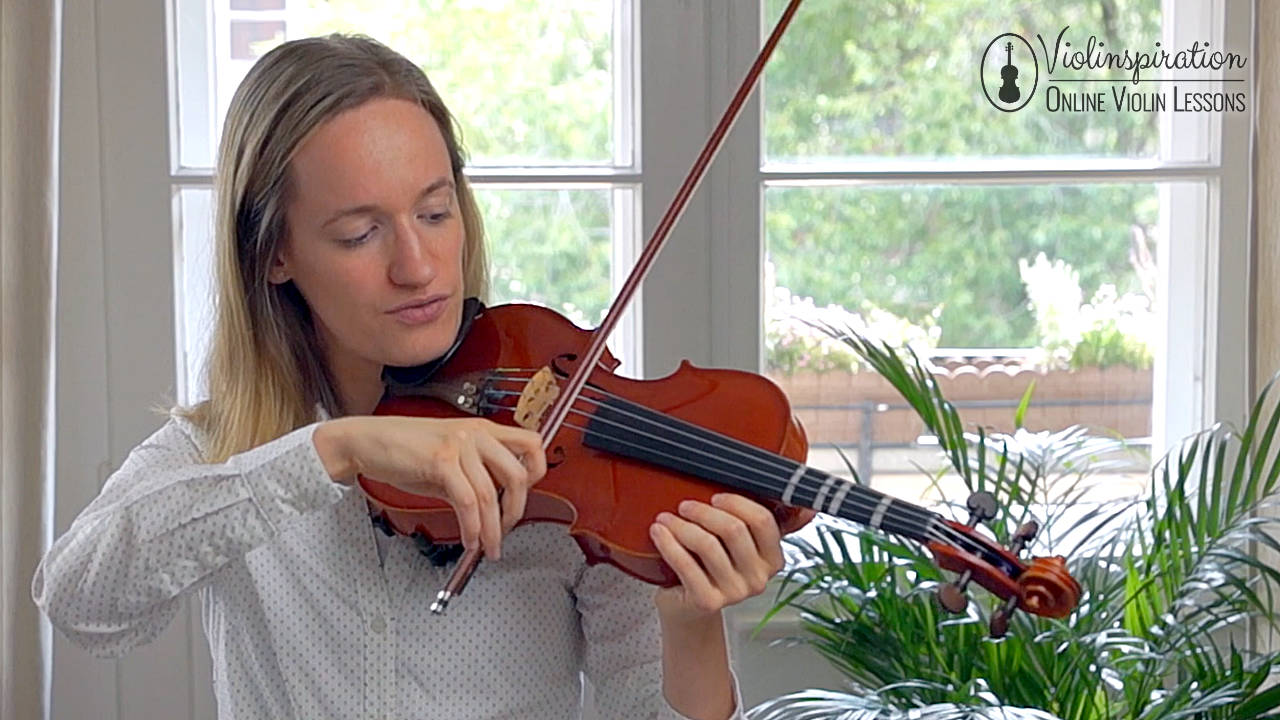
Once you get the movement right, tune in to how this feels in your body. Then try to reproduce the sensation, and check if your bow is in fact straight. Repeat this process until it is ingrained in your muscle memory.
When there is nobody to help and you have no mirror, there is another way to keep your bow relatively straight, which is by focusing on its position halfway between the bridge and the fingerboard. Here is a video where I explain it in more detail:
2. Wrong Contact Point
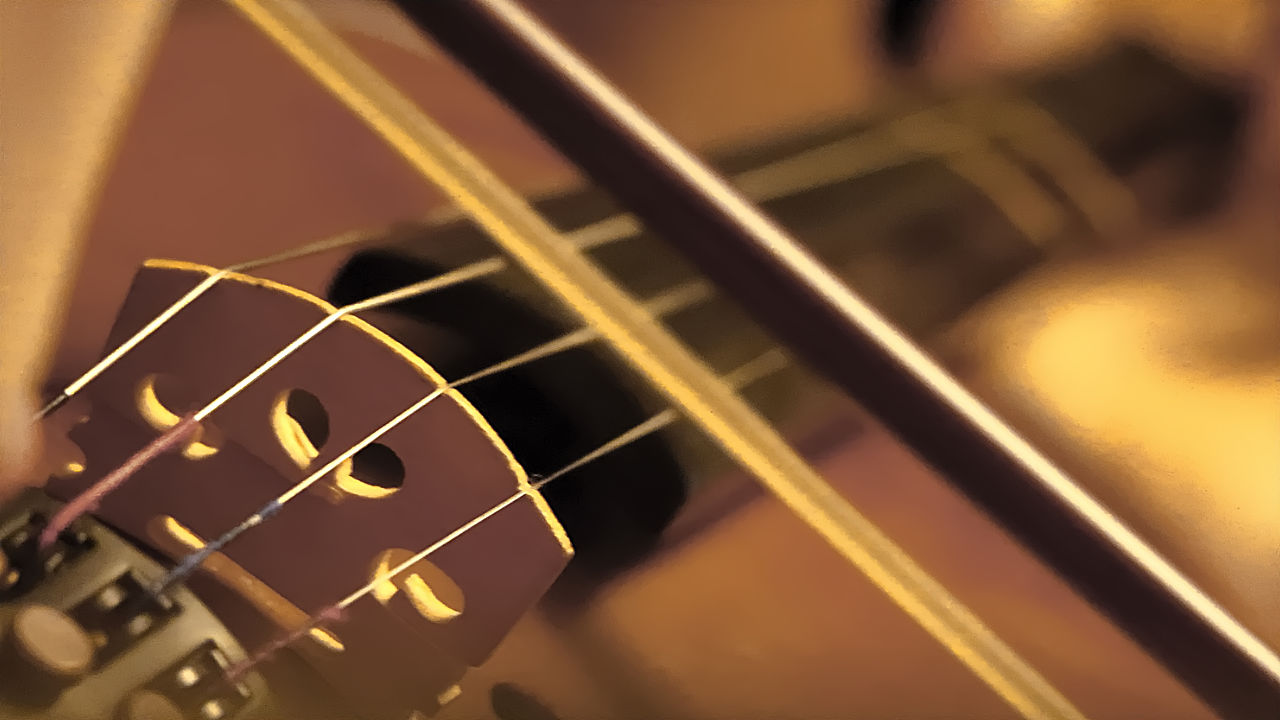
The contact point is the place where the bow meets the string. To create the right vibration in the string, the bow has to have enough grip to make the string move but not so much that it stops it from vibrating. The positioning of the bow, the pressure, and the speed all play together to create the right amount of friction between the two.
For beginners, it is advisable to start playing halfway between the bridge and the end of the fingerboard, with medium pressure and medium speed.
Of course, it is possible and sometimes needed to play close to the bridge, in which case you will need more pressure, or closer to the fingerboard, where you need lighter pressure. Also, the more pressure you’re using, the more speed you will need to move your bow with.
Staying in the middle, if you apply more pressure, you will need to compensate for this with higher speed, and if you reduce the weight, you need to slow down. You may want to experiment and see which combinations in which position create what kind of sound.
In addition to this, which part of the bow you are playing in is also important. Playing close to the frog you will need more speed and more pressure. To get a feel for how much pressure is too much or too little, nothing can replace trying things out for yourself.
Here you can get my free Contact Point Guide to achieve a beautiful violin tone:
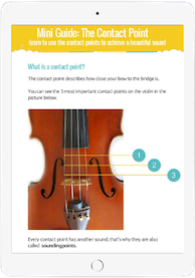
FREE Contact Point Guide
Improve Your Contact Points Technique
3. Too Much or Too Little Rosin
The smoothness of your sound is also greatly influenced by the amount of rosin you have on the bow hair. Not enough rosin will produce an airy, floaty, feeble sound while having too much rosin will make your sound scratchy. Here you can listen to examples of no rosin, too much, too little, and just enough rosin.
Apply rosin a few days apart, and sparingly. I only put some more on mine if my sound starts to disappear. But how much is enough rosin will be down to what feels good to you.
We need to use rosin or the bow would have no grip at all and no sound would come out of the violin, we just need to judge how much. Also, rosin leaves a powdery residue on the instrument, and it’s important to clean this off from the strings after every use. The rosin dust that settles on the strings after practice can also create a squeaky sound.
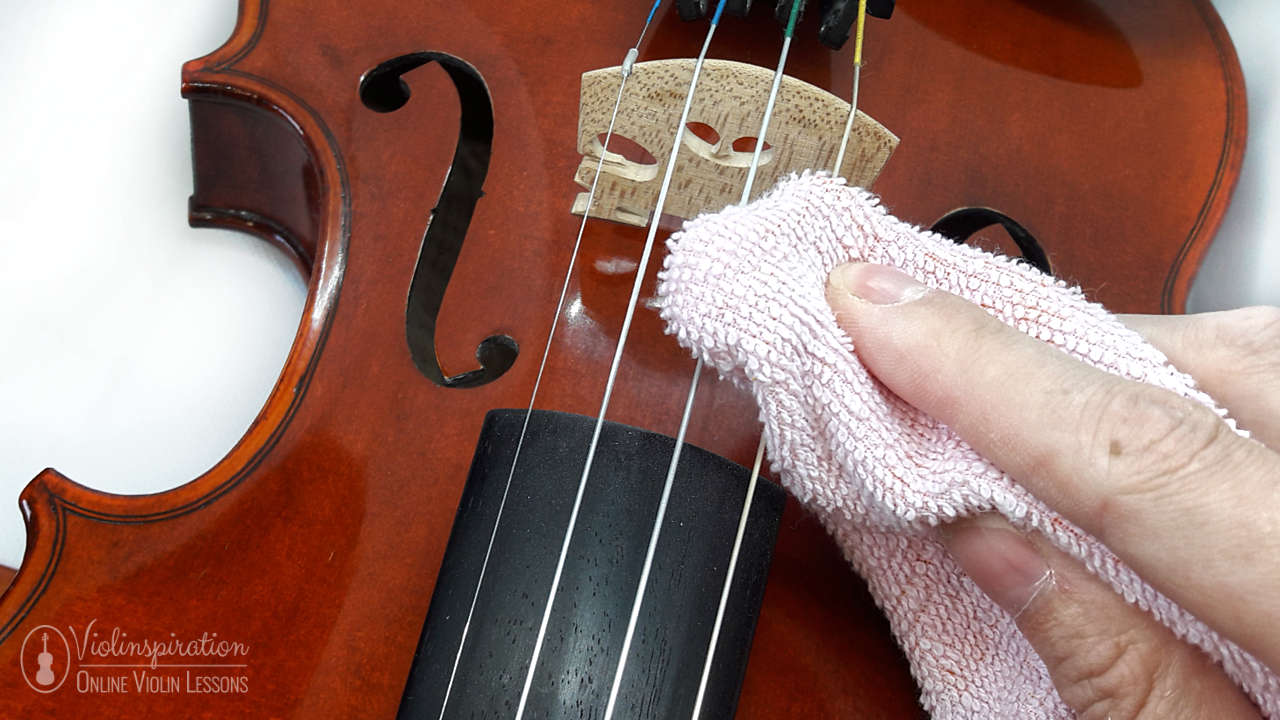
4. Too Much or Not Enough Pressure on the Bow
The bow needs to have enough contact with the string to make it vibrate. This is achieved by relaxing the right arm and letting its full weight rest on the bow, and indirectly on the strings. It is never about pressing down hard.
When a player is tense or nervous, and their body is not relaxed, this lifts the weight off the bow somewhat, which will start to slide, losing its grip on the string. The resulting sound will be airy and scratchy. Check that your arm is relaxed, and its weight is transferred to the instrument.
Sometimes, when I tell people that they don’t have enough weight resting on the bow, they start pressing down hard on it. This can also distort the sound. This grasping makes for rigidity, and even though now there is pressure, this will be unable to adjust itself at the moment, resulting in the wrong amount of pressure. You’re trying too hard. If you have to make a lot of effort or things become too strenuous, it’s time to let go and see if you can do things with more ease.
What exactly is the right amount of pressure depends on factors such as how close to the bridge you are and how fast your bow is moving.
5. Wrong Bow Speed
Sometimes it’s not so much that there is too much pressure, but that the speed of the bow is too low for this amount of pressure. The bow speed and the amount of pressure work in combination with each other, so what’s too much pressure for one speed may be too little for another. So experiment with your bow speed and see if it makes a difference.
6. Rigid Bow Hold
Just like rigidity in the arm will cause problems, so will a rigid bow hold. In fact, any tension in any part of the body will translate into some issue with your final sound, but that’s beyond the scope of this post. The bow needs to move smoothly, and make the string vibrate.
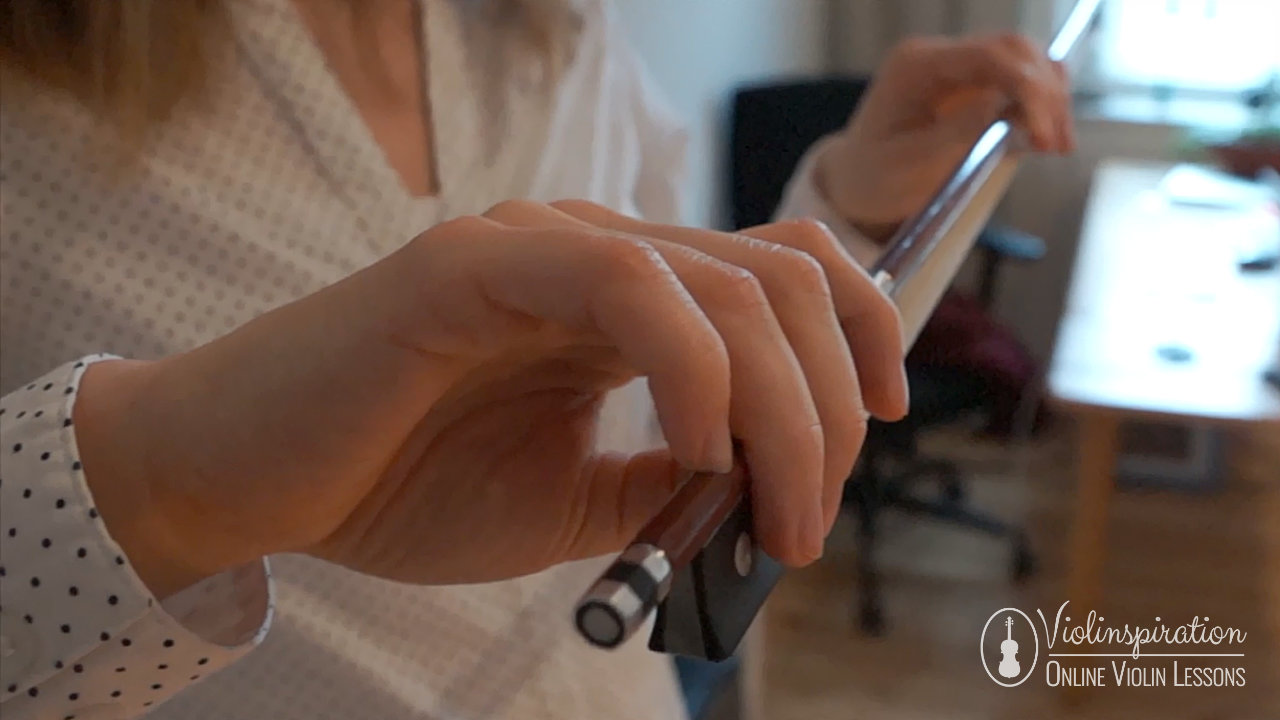
For a good, resonant tone, there has to be a dynamic and alive relationship between the bow and the string. A rigid bow hold will strangle your sound. At the same time, your hand can’t be floppy, or you’ll drop the bow. It will take time for you to find your sweet spot.
In this video, I explain in more detail how to relax the bow hand:
7. Quality of Strings or Bow Hair
When your strings get old, their sound starts to deteriorate. Make sure to replace them when this happens, or every few months, depending on your usage. To help you chose the best strings for you, I wrote the article “6 Things to Consider When Choosing Violin Strings” and if you need to replace them, here is a step-by-step instruction.
The bow needs to be properly wound to have enough tension in the bow hair, but not too much. But how much is that? It’s a bit of a ‘how long is a piece of string’ kind of question.
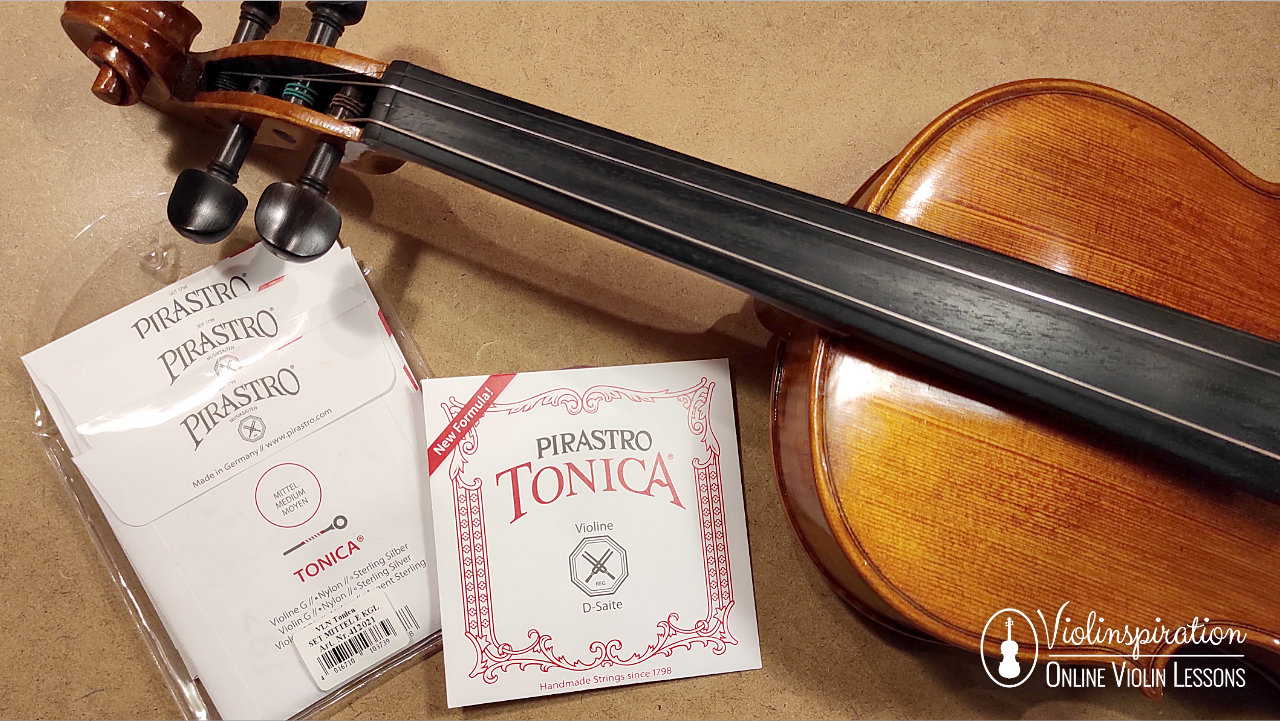
When the bow is put away after use, the end screw should be always unwound so the hair becomes floppy. It will generally touch the wood of the bow stick.
When you decide to play, you start winding the screw, so the hair tightens and pulls away from the stick. All this time the bow stick has a curvature where the middle is bending towards the hair. You want this to stay this way. If the wood starts bending the other way, you have gone way, way too far, and are putting great pressure on your bow – you must never do this.
8. Systemic Problems With the Violin
Sometimes the problem comes from how the violin is set up or actual structural issues. You can always check visually if the bridge is upright and resting flat on the body of the violin. Here you can read more about the violin bridge and it’s fitting to get the most beautiful sound.
However, you could also have problems with your soundpost or the height of the bridge in relation to the way the fingerboard is positioned. This latter would mean the strings can be too close to and touch the fingerboard.
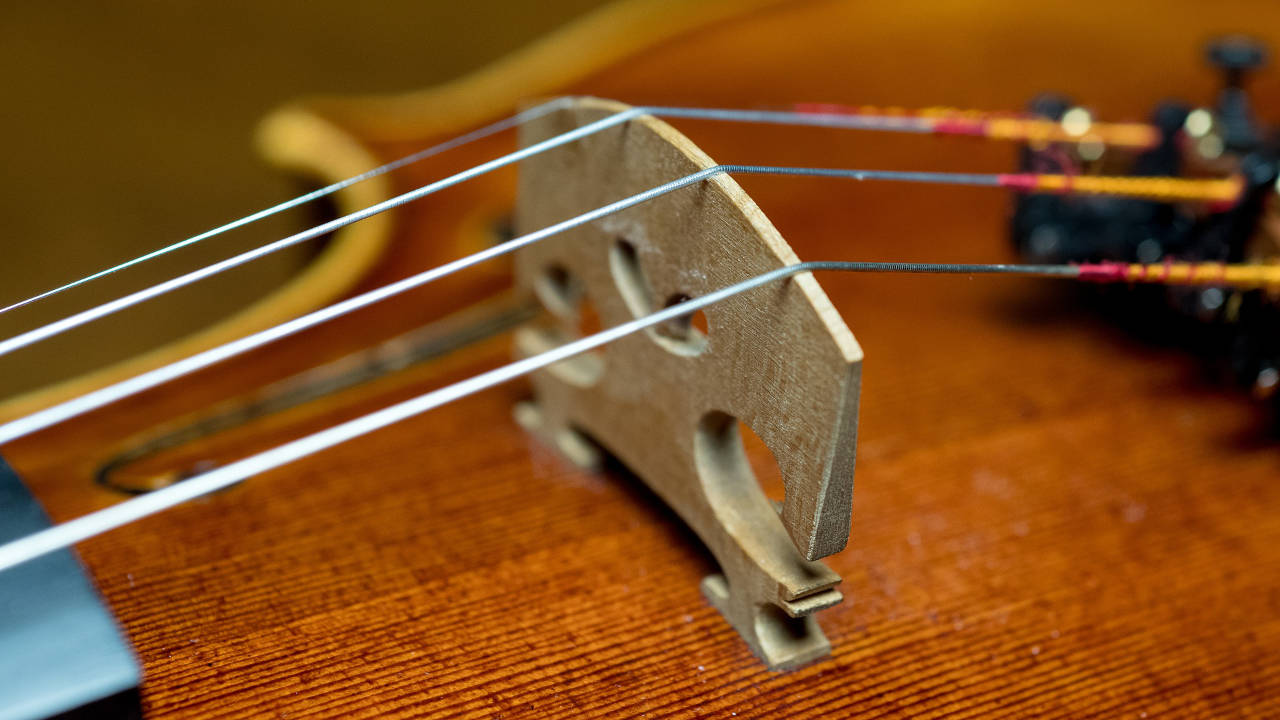
Your violin could have an open seam. Seams are the places where two separate wood parts are joined by glue. If a seam opens, this will cause a buzzing sound. This and any issues with the soundpost can only be fixed by a luthier. Having your violin set up by one is a good idea, and having it checked over every couple of years is also prudent.
FAQ
How Do I Get Rid of the Scratchy Sound on My Violin?
To get rid of the scratchy sound on your violin you can do the following:
- make sure you’re bowing straight
- play halfway between the bridge and the fingerboard
- adjust for playing with the upper, lower, or middle part of the bow
- apply the right amount of rosin to the bow hair
- adjust bow pressure
- adjust bow speed
- relax your bow hand
- replace your strings if needed
- make sure the bow hair is properly wound
- check if your violin bridge is correctly fitted
- check if strings do not touch the fingerboard
- make sure the soundpost is not loose
- examine your violin for any open seams.
Why Does My Violin E String Sound Scratchy?
Your violin E string may sound scratchy due to one of the following reasons:
- Too much or too little bow pressure
- The bow is too slow
- Your bow is moving at an angle
- The string crossing was not made clearly
- Your strings are not clean
- You have high tension strings
Sometimes, when crossing over to the E-string, there is a sudden squeaking, whistling sound. It’s really loud and painful, and it can seem like there is no obvious reason for this. However, like all things, it has a cause. The E-string will bring out every issue you have with your bowing. It is more sensitive than the other strings, so everything will become more noticeable.
How Do You Get Rid of Violin Beginner Sound?
To get rid of the beginner sound trust that you can get there. Allow yourself to take the time necessary to practice all the elements from correct posture to the different bowing techniques, not all at once, but focusing on each one separately at a time.
In addition to those things related to eliminating bad sound, there are many other technical points that contribute to sounding like a beginner. These include techniques relating to each hand, such as intonation for the left hand and bowing techniques like string crossings for the right.
As long as you trust that by learning and practicing each topic you are gradually improving, you can sound quite good from the beginning. Even if you’re playing Twinkle Twinkle Little Star, you can make it clean, precise, and enjoyable. The old wives’ tale about years of painful noise coming out of the practice room is just that. A tale.
If you’d like to know my tips to look like a professional while still being a beginner, check out this video.
How Do I Make My Violin Sound Smoother?
Your violin will sound smoother if you put special attention to every bit of technique you have learned, the confidence with which you play, whether your whole body is relaxed and moving together, or if there is tension or tightness in the body that will block the flow of the sound.
Yes, your whole body matters. People who have a good ear or expert players can tell just by listening to your sound where the problem is in your body.
Sometimes you learn some specific technique and focus on practicing this, and at other times you can feel into your body and move it as if you were dancing. As if the whole body plus the violin together were one unit that is making music. Switching from the zoomed-in, isolated view to the global zoomed-out view can make a lot of difference.
3 Bonus Tips for Cleaner Sound
So far I have focused on avoiding squeaky sounds. However, there is much more that makes for a clean, crisp, precise tone, and here I offer you a few more suggestions.
1. Precise String Crossings
The bow needs to cross over to the other string at a precise time in the music and has to move from one angle to another via the tilt of the right arm and the position of the right hand. The level of the right elbow also depends on which part of the bow you are in at the time of the string crossing.
I talk more about clean string crossing in the following video:
2. Precise Note Changes
The moment your bow changes direction has to correspond to the moment your fingers on the left hand change position. To get this timing right, practice one bar very slowly and with different rhythms, such as ta-ti ta-ti, then ti-ta-ti-ta, or ti-ti-ti-ta, or ta-ti-ti-ti, and so on, where “ta” would be a long note and “ti” – a short note.
To practice different rhythms more excessively, you can use the Rhythm Cards. Or, if you’re a member of Julia’s Violin Academy, you can do the Note Reading course, during which you’ll learn various rhythmic patterns.
3. Avoid Hitting Other Strings
Get a feel of the height of your arm when playing each particular string, and the feel of how it moves and opens. Once you get used to a particular height associated with each string, your body will remember and go to this height automatically.
The human body has the capacity for extreme accuracy if left to its own devices and the rational mind doesn’t interfere. Given that we have to go through the rational mind when we learn things, we need to accept that at the beginning things don’t flow smoothly. And once we have learned something, we then need to let go of conscious control and allow the body to do what we have taught it.
Final Note
Playing clean, smooth sounds on the violin doesn’t have to be hard if you build it up step-by-step. Playing simple things first allows your body to get used to how to make the basic movements and from that, you can build up more complexity.
